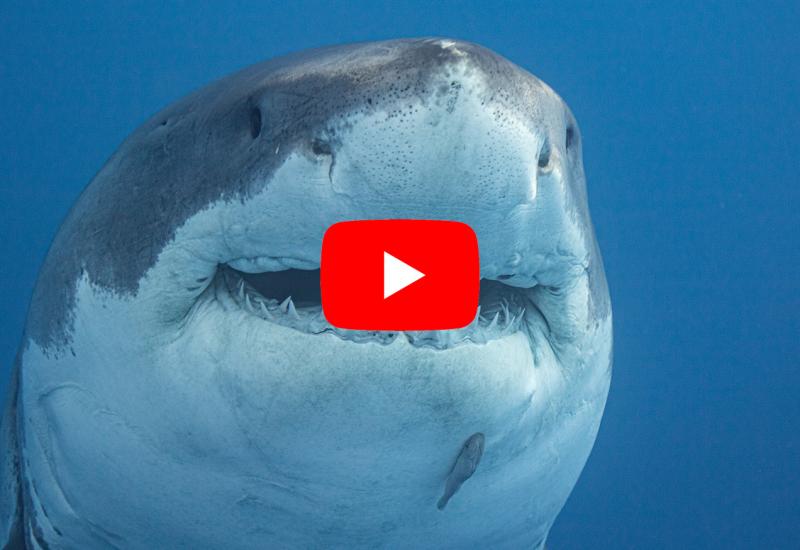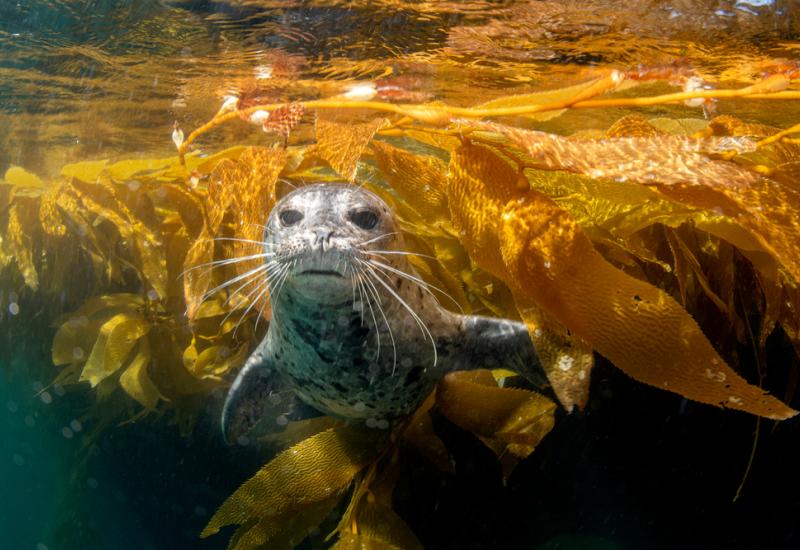Lake Tulainyo
I followed my dive partner, David Moore, from one handhold and foothold to another - a single slip meant a 200-foot fall to the trees below. We reached a long horizontal ledge and followed it east until we had to start climbing upward again. Another longer ledge, and we were back on the main trail and headed to Lower Boy Scout Lake and some rest. It was a hell of a way to get to a dive. I'd wanted to dive Tulainyo Lake in California's eastern Sierras since hearing about it 20 years ago. Tulainyo is the highest lake (of lakes with more than one-tenth square mile of water) in the Continental U.S. At 12,818 feet, it's nearly 300 feet higher than Peru's Lake Titicaca, the highest navigable lake in the world. Icy-cold and deep sapphire in color, Tulainyo lies in a crater-like depression between two mountain peaks near Mount Whitney. It is a jewel set in a lonely and desolate place. Uphill to Water We started from the town of Lone Pine in the Sierra foothills and arrived late at night at Whitney Portal, the gateway to the Mount Whitney trail. A bright and crisp morning greeted us at 8,000 feet where the trailhead began - Tulainyo was a mile above us. Along with traditional mountain-hiking gear we also carried masks, fins, exposure suits, regulators and twin pony bottles holding our air supply. Our packs weighed 80 pounds each - heavy at sea level, so we could only wonder what they were going to feel like at 13,000 feet. Leaving the trailhead, we followed a well-maintained trail that snaked its way upward along a canyon wall. Then it was on to a more primitive trail along Lone Pine Creek. Once off the trail, we encountered the Eberbacher Ledges, a series of ledges glued to a granite face that led to Lower Boy Scout Lake. As we rested there we took in the vista - Mount Whitney and its satellites, the Keeler Needles - and answered the questions of several parties of climbers who noticed the strange gear we carried. You want to dive Tulainyo?! A shake of the head, some unspoken questioning our sanity, and they'd be gone. Twelve hours of foot-burning, back-breaking hiking later, we set up for a good night's rest. We'd need it; 1,500 feet above us loomed the wall of Mount Carillian and the waters of Tulainyo. We broke camp under a Technicolor sky the next morning, left all our equipment except our dive gear, tanks, a bottle of water and an energy bar each, and then we headed out. The Dive A natural basin spread out some 3,000 feet in length below us, its far shore lined with glacial ice, a crescent of white reflecting in the indigo-blue water. Excited, we descended to the lake's shore and started the gear-up process. We were using high-altitude dive tables, but Tulainyo was way off the chart, so we decided to limit our dive to 30 feet. Our air supply would only hold us about 15 minutes - enough time for this first exploration. David stuffed his drysuit pockets with stones; I loaded an old shot belt with rocks and grabbed my Nikonos, and we were off. There was no beach, and the bottom dropped just a few feet from shore. We floated as we adjusted gear, then made the dive. The water was incredibly clear, unlike most mountain lakes that are green from high algae content. Tulainyo seemed devoid of vegetation as well as fish, amphibians or insects. We spotted no life in the lake, and as David and I swam 30 feet below the surface we felt like Armstrong and Aldrin with our Tranquility Base. I bailed after we returned to the surface to fix our bearings, freezing in my surf suit, but David continued to dive as I made my way to shore. While soaking up the powerful rays of sun, I looked down and saw something move - a tiny fish the size and shape of a toothpick. I reached down to try to scoop it out, but it headed for deep water. Tulainyo wasn't a sterile environment, and I wondered what other mysteries were to be found in the depths. After the dive Dave and I packed our dive gear and began the long climb back down to civilization. But before I did, I carved our initials into a quarter and tossed it into the lake to commemorate our dive. The highest scuba dive in the Continental U.S. was ours.










